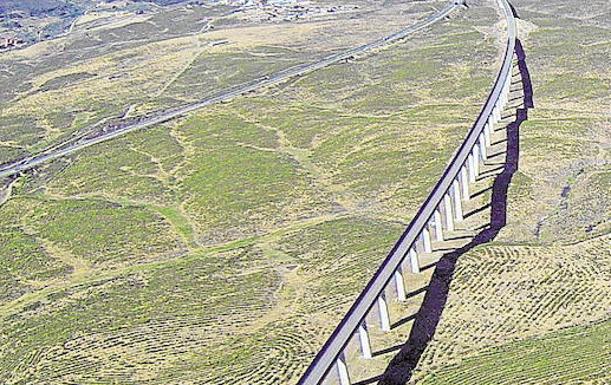The procedures for the electrification of the high-speed line from Madrid to Extremadura begin, although in a first phase the action will take place between Plasencia and Badajoz. The Administrator of Railway Infrastructures (Adif) has completed the construction project and has begun a process of public information for the necessary expropriations.
The project consists of building the traction electrical substations and associated centers of the AVE line in the Cañaveral, Carmonita and Sagrajas areas.
The Official State Gazette published an Adif-Alta Velocidad announcement on Monday, which opens a public information period of fifteen business days on the relationship of goods and rights affected by these works so that anyone can rectify possible errors in the owners or to oppose the occupation.
According to this announcement, it will be necessary to expropriate more than 43,000 square meters of rural land in the municipalities of Malpartida de Plasencia (3,234 square meters), Cáceres (6,712), Mérida (27,537) and Badajoz (5,543). In Cañaveral and Casas de Millán only temporary occupations will be carried out.
The action includes the construction in each area of a new substation, a final autotransformation center (they will be located at the beginning of the three sections into which the work is divided) and three intermediate autotransformation centers.
The Cañaveral substation, which according to the project is located in Casas de Millán, will supply the Plasencia-Cáceres section. The intermediate centers will be in Malpartida de Plasencia, Garrovillas de Alconétar and Casar de Cáceres. The Carmonita substation, in the municipality of Emerita, will serve the Cáceres-Mérida section, with intermediate centers in both locations. Finally, the Sagrajas substation, in Pueblonuevo del Guadiana, will serve the line from Mérida to Badajoz, with intermediate centers in Torremayor and in the district of La Paz.
These facilities will cover different sections of the AVE, from the connecting branches to Plasencia, where the conventional line will connect with the high-speed platform, to the accesses to the capital of La Paz. In this way, the action will allow attention to the entire line between Plasencia and Badajoz.
The public exposure announcements do not include an economic report, so the budget for these works is not yet known. But the 2015-2020 electric power transmission network development plan contemplates an investment of 47.9 million euros for the construction of the three aforementioned substations and the expansion of that of Arañuelo, with which the four points will be completed of the 400 kilovolt transmission network from which the high-speed train traction facilities will be supplied. Of this amount, 4.8 million correspond to the promoter, Adif.
Of these four substations, which will also allow for the evacuation of renewable energy plants, only the one in Sagrajas was left out of the 2015-2020 planning. But now Adif-AV is promoting its construction to service the Madrid-Extremadura high-speed train, whose electrification between Plasencia and Badajoz is committed by the Ministry of Development for the year 2020.
Bridges and controls
While Adif begins the steps to electrify the Plasencia line to Badajoz, it also continues with the work necessary to complete the high-speed infrastructure with contracts for the completion of the works.
Specifically, the entity will have 1.2 million euros for the inspection and load test tasks of the bridges located between Plasencia and Badajoz. These works will allow evaluating the reliability of the viaducts built.
The action includes the bridges over the Tagus and Almonte rivers, two unique structures on the Madrid-Extremadura line, which are almost 1.5 and one kilometer long, respectively. But they are not the longest viaduct, as they are surpassed by the almost 1.6-kilometer Valdetravieso viaduct on the Casas de Millán-Cañaveral section.
According to the documentation that completes the technical specifications sheet, between Plasencia and Badajoz there are eleven viaducts that are more than 250 meters long, including the three mentioned. These and other minors will undergo load tests to find out their behavior towards the commissioning of the line. The execution period for this project is 18 months, so it will conclude over the next year.
In addition to this contract, Adif has also put out to tender the consulting and technical assistance for the environmental management of works on different sections of the Madrid-Extremadura high-speed line. The successful bidder must verify that the preventive measures included in the respective environmental impact statements are complied with and, if deemed necessary, propose new ones.
The budget is 576,500 euros. The execution period is two years, which goes beyond mid-2019, the date estimated by the Ministry of Public Works for the completion of the works between Plasencia and Badajoz. But keep in mind that it includes performances outside this corridor.
Specifically, the specification establishes the monitoring of 29 contracts associated with the Extremaduran AVE, some for infrastructure works and others for the assembly of tracks or facilities. These include four that have not even been launched, located between Navalmoral de la Mata and Plasencia.
SOURCE: HOY.ES


